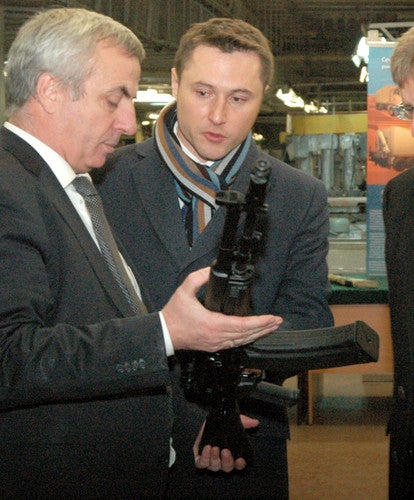The next-generation AK rifle, formally referred to as the AK-200, has been named the AK-12. Its name refers to 2012, the year it will go into production. Izhmash is referring to it as the fifth generation Kalashnikov rifle1 .

The controls have been modified so that they are more ergonomic and can be operated by an injured solider with only one available hand. Rails have been added to make the gun compatible with modern accessories.
The AK-12 will be made available chambered in 5.45mm, 5.56mm NATO, 7.62x39mm and a new not yet named caliber. It is possible that this new caliber is the 6.5mm Grendel. Wolf Ammunition recently said they were in talks with Izhmash to produce Saiga rifles chambered in 6.5mm.
The company had said that the gas and piston system remains unchanged from the earlier AK models, but it is not clear if they are going to use the older AK-74 gas system or the newer improved AK-108 “balanced recoil” system. The AK-12 will be available in a range of sizes, including a short barreled model for Special Forces.
The AK-12 will be officially unveiled in the near future.
-
The first generation being the AK-47 followed by the AK-74, AK-74M, AK-1xx and now the AK-12 ↩
 Your Privacy Choices
Your Privacy Choices

